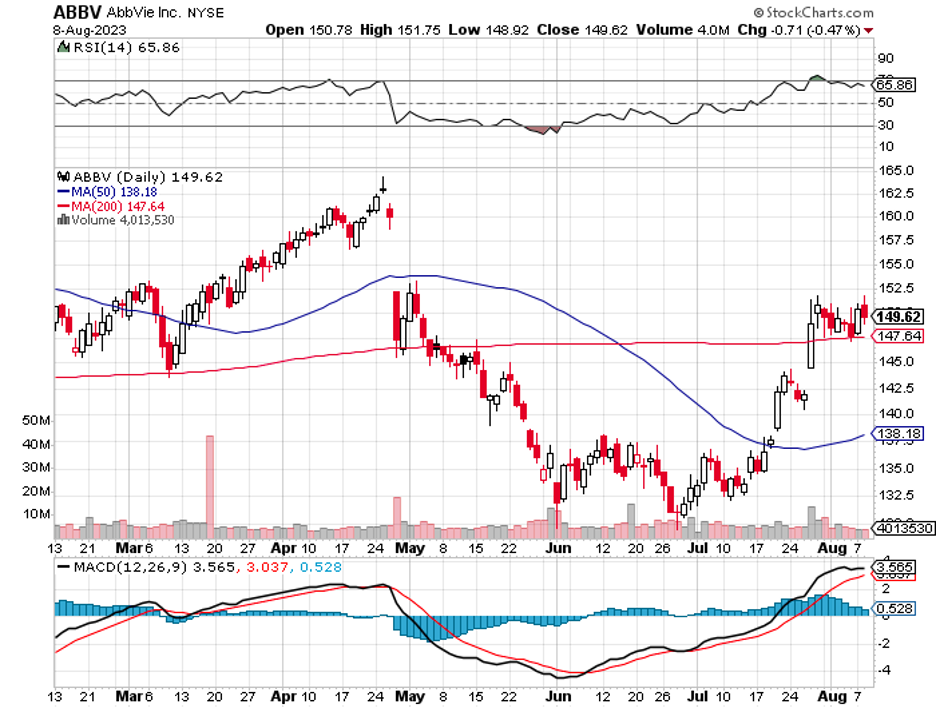The Dividend Aristocrats Club is a badge of honor for those S&P 500 stocks that have managed to increase their dividends for at least 25 consecutive years. But let's take a closer look because there's an even more exclusive club worth our attention.
Introducing the Dividend Kings, the unsung heroes of the dividend world. No need to be part of the S&P 500; these select few must achieve at least 50 consecutive years of dividend growth. That's a feat as impressive as running an investment marathon and crossing the finish line with energy to spare!
Among them? AbbVie (ABBV), is a name synonymous with financial resilience. Let's explore why this Dividend King is attracting the attention of savvy income investors.
AbbVie, with 51 years of dividend growth, has a strong financial footprint. It is the fifth-largest pharmaceutical company worldwide, with a market capitalization of $260 billion. It ranks just behind industry giants such as Johnson & Johnson (JNJ) and Eli Lilly (LLY). Its pharmaceutical line-up serves over 62 million patients annually, combating conditions like cancer and migraines.
Now, let's not overlook some recent financial trends. AbbVie recorded $13.9 billion in net revenue during the second quarter, a 4.9% drop from last year, but the net revenue only fell by 4.2% when considering currency fluctuations. A stumble? Perhaps. A fall? Not quite. This Dividend King may have more to reveal.
However, it is essential to remain grounded in reality. After all, even giants face their day of reckoning.
AbbVie's Humira, a drug that generated $200 billion over the last 10 years, lost its exclusive patent in January 2023. Biosimilar competition led Humira's total revenue to shrink by 25.2% in the second quarter.
The company’s non-GAAP diluted earnings per share (EPS) dipped by 13.6% year over year to $2.91 for the second quarter. The company's non-GAAP net margin contracted by nearly 390 basis points year over year.
Clearly, the era of Humira's dominance as the top-selling medication in history is slowly coming to an end, paving the way for a future where its sales will be reduced. A tough pill to swallow, no doubt, but it's not all gloom at AbbVie's camp.
In 2022, Humira's global sales peaked at $21.2 billion. The emergence of biosimilar versions like Amjevita from Amgen has seen global Humira sales slide to $16 billion in the second quarter. However, AbbVie is managing the decline with rapidly increasing sales from newly launched drugs.
Promising medicines such as Skyrizi, Rinvoq, Botox Therapeutic, Vraylar, and Venclexta continue to offset the withering Humira sales, with solid growth prospects in other areas and a pipeline full of potential.
These new drugs appear ready to replace the shrinking Humira revenue. With other growth drivers like Epkinly and Vraylar, AbbVie looks well-positioned for the long term.
Additionally, with a strong $23.5 billion free cash flow over the past 12 months and needing just 43% of that amount to meet its dividend commitments, the company's 4% yield remains appealing to income investors.
The decline of Humira's sales is significant but hardly a death knell for AbbVie. The company has shown resilience and adaptability, balancing both growth and income potential.
While the potential risk of a recession could disrupt these trends, AbbVie's 50-plus-year record of increased dividends suggests historical resilience.
With moderate annual dividend growth likely, and a strong foundation for future development, AbbVie represents a compelling buy for investors. The figures and financials paint a picture of opportunity; now it's time to consider whether AbbVie fits into your investment portfolio.
Remember, the crown of a Dividend King is not easily earned, and AbbVie's financial performance showcases a royal opportunity worth exploring.

